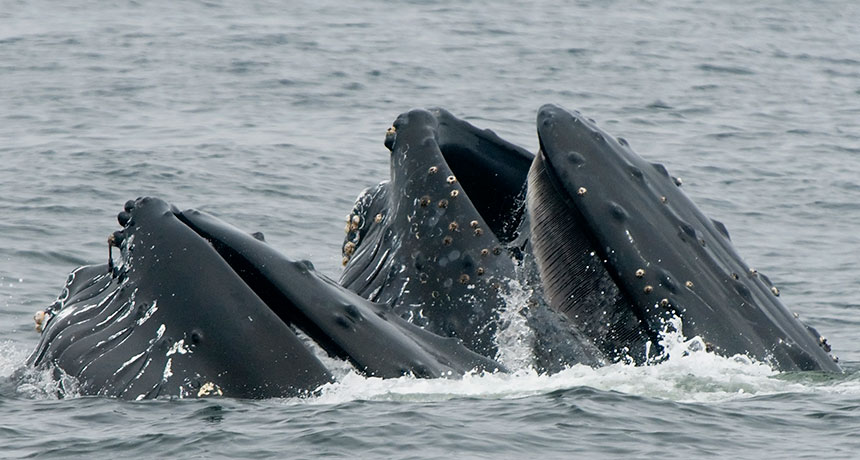Whales feast when hatcheries release salmon

Humpback whales, those innovative foodies, have discovered their own pop-up restaurants.
Migrant humpbacks returning to southeastern Alaska in spring are the first of their kind known to make routine visits to fish hatcheries releasing young salmon into the sea, says marine ecologist Ellen Chenoweth.
The whales are “40 feet long and they’re feeding on fish that are the size of my finger,” says Chenoweth, of the Juneau fisheries center of University of Alaska Fairbanks. For tiny prey to be worthwhile to humpbacks, it’s good to find crowds — such as young salmon streaming out of hatchery nets.
Six years of systematic observations of whales at five hatcheries at Baranof Island reveal a pattern of humpbacks visiting during springtime releases, Chenoweth and her colleagues report June 12 in Royal Society Open Science.
Whale visits to the salmon buffet enhance humpbacks’ reputation for innovation in feeding, Chenoweth says. And since the water is relatively shallow, visits also make it easier to film humpback lunge feeding. More often, studying whale food dives means watching animals surface from the depths to catch their breath before the next exciting plunge. “It’s like going to a basketball game but you can only really watch players on the bench,” Chenoweth says.
Underwater, a humpback opens its jaws and rushes into the mass of prey as its throat balloons out “like a parachute opening,” she says. The toothless whale then filters the mouthful, swooshing it out through dangling fringes of baleen, which snag what’s worth swallowing. In one lunge, a humpback can take in about 27,600 liters of seawater — about 28 metric tons — roughly doubling the whale’s weight.